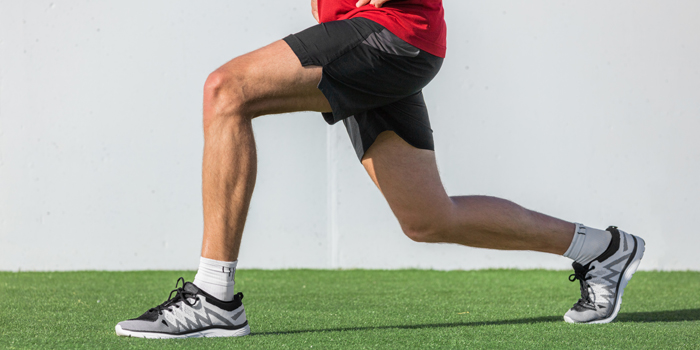
Lunges are a great alternate stance movement that can aid in strength, power, and speed. Frequently, athletes understand the lunging pattern from seeing it before but do not truly understand what should be moving and what is the primary goal. In addition, athletes are sometimes rushed to the typical weighted walking lunges without the proper progressions.
Although the intention of increasing performance from the strength coach is correct, the faulty mechanics prove otherwise. Instead, regress the athlete and utilize these tips to help them better understand the proper mechanics to then progress them back to the more challenging lunge.
1. The Back Leg
Often, the back leg is forgotten about during the lunging motion. When this occurs, we see the awkward movement of a straightened back leg while simultaneously trying to lower the entire body to the ground. This equation equals an athlete that projects forwards and results in the typical knee pain often experienced during a lunge.
Instead, utilize the wall to get an exaggerated plantarflexed foot. This will help them achieve the 90-degree angle at the knee that is desired and be able to drop straight down compared to the forward projection.
2. The Sternum
Utilize the sternum as the reference point during the lunge. Any deviation, such as a forward or backward motion, that occurs is a sign of compensation. When the athlete comprehends this reference point, it allows an easy determination of an incorrect or correct motion.
As I mention in the video, this creates more of an elevator movement upon the descent of the lunge (up/down) compared to an escalator (forward/diagonal).
Brian is the owner of Functional Training Studio in Charlotte, North Carolina. Brian has been training clients for over six years and is always looking at ways to improve his technique. He utilizes positional asymmetries that exist within the body to help clients and athletes improve their function and overall performance capacity. Brian has a degree in exercise science and is a certified strength and conditioning coach through the NSCA. Additionally, he plans to continue his education in 2017 in a doctorate of physical therapy program. For additional questions, Brian can be reached at FTStudio130@gmail.com.











1 Comment